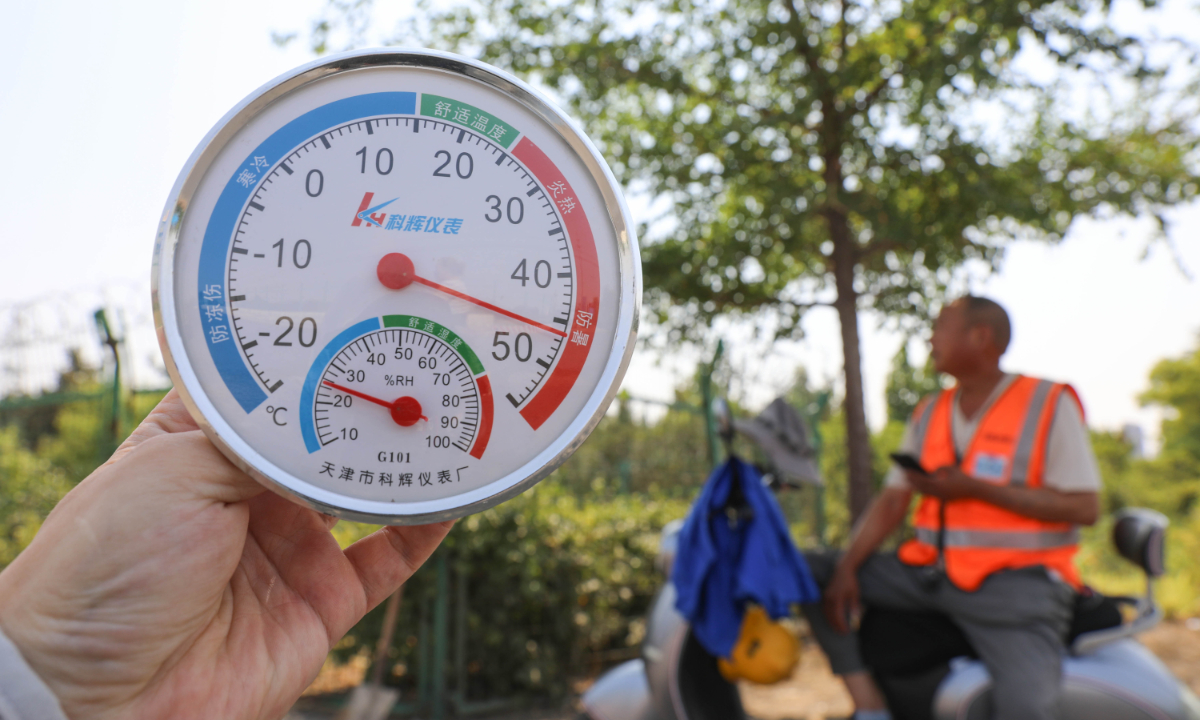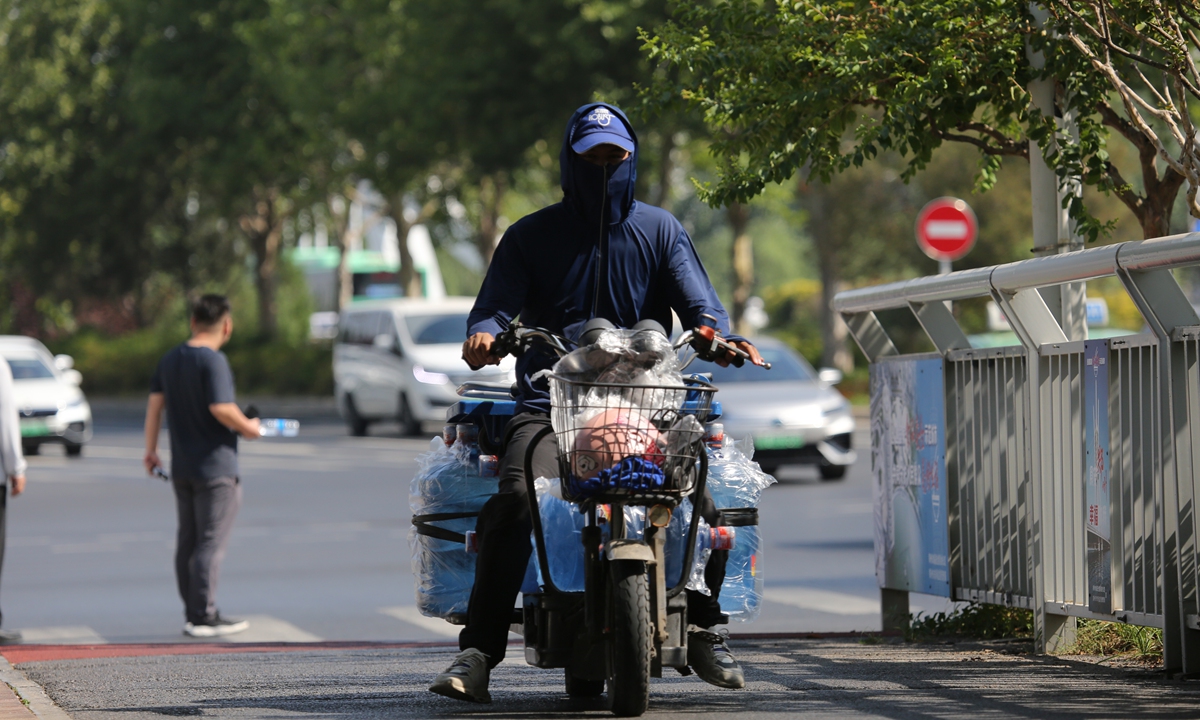
Temperature surges to over 40 C in Pingdingshan city, Central China's Henan Province on June 12, 2024. Photo: IC
While the mercury recently surged to 40 C in northern China, leading to severe drought that has affected agricultural production, heavy rainstorms bringing record-breaking precipitation have swept through southern China, jeopardizing local people's life and property.
Experts have attributed the recent complex and contradictory weather conditions to the joint effect of El Nino and La Nina coupled with global warming. In response, authorities have deployed various measures to combat high temperatures and control flooding to stabilize production and ensure the people's livelihood in affected areas.
Influenced by both cold and warm air currents, multiple places in southern China have recently been experiencing continuous heavy rainfall. The national flood control and drought relief authority initiated a Level IV emergency flood response for South China's Guangxi Zhuang Autonomous Region and East China's Fujian Province on Thursday, dispatching work teams to the regions to offer assistance and provide guidance.
Since Thursday, northern Guangxi has experienced heavy to torrential rain, with some areas seeing exceptionally heavy downpours. The region's meteorological bureau initiated a Level III emergency response for major meteorological disasters (heavy rain).
Since the beginning of the rainy season in April, 911,000 people in Guangxi have been affected by complex and volatile weather, frequent extreme weather events, and rare levels of precipitation, with direct economic losses totaling 1.41 billion ($194.5 million), local authorities in Guangxi reported on Saturday.
The situations are exactly the opposite in the north. China's National Meteorological Center (NMC) continued to issue a yellow alert for high temperatures on Sunday, warning of heat waves lingering in North China and the Huanghuai regions despite weakened intensity and a reduced scope. This was the 10th consecutive day since June 7 that the NMC had issued a high temperature warning.
China's Ministry of Water Resources recently initiated a Level IV emergency response for drought in eight provinces including North China's Hebei Province, East China's Shandong Province and Central China's Henan Province, taking various measures to combat high temperatures, stabilize production and ensure local people's livelihoods.
Statistics from the NMC show that as of Friday, 12 national-level meteorological stations in multiple places such as Hebei, Henan and Shandong recorded daily maximum temperatures exceeding historical extremes, and 228 national meteorological stations reported daily maximum temperatures above 40 C. The overall intensity of this heat wave ranks as the fifth strongest nationwide in the past five years, affecting nine provinces covering an area of about 850,000 square kilometers and a total population of 380 million.
The direct cause of the regional high temperatures is an abnormal phase of atmospheric circulation, Zheng Zhihai, chief forecaster at China's National Climate Center (NCC), told the Global Times on Sunday.
According to Zheng, the combined effects of high pressures and clear skies with few clouds have resulted in the intense and persistent high temperatures in the eastern part of the country.
According to NMC, as global warming intensifies, high-temperature weather in China in recent years has shown characteristics such as earlier onset dates, increased frequency, more cumulative days, wider affected areas, and greater overall intensity.
Zheng explained that global warming is the climatic backdrop for the occurrence of extreme high temperatures worldwide, adding that since the mid-20th century, the rate of climate warming in China has been significantly higher than the global average for the same period.
He also noted that it is highly likely that El Nino, which began in May 2023 and is likely to transition to La Nina by late summer or early autumn of 2024. The El Nino and La Nina events sparked the climate anomalies around the world, including in China.
According to Li Xiucang, deputy director of climate services at NCC, temperatures in most parts of the country this summer will be higher than past, with an increased number of high-temperature days and extreme high temperatures occurring in some areas.
It has been forecast that from Saturday to Monday, strong rainfall will persist in the Jiangnan region, South China, as well as the Yunnan, Guizhou, and Sichuan provinces, while high temperatures will continue in North China and the Huanghuai region in the coming days, with some areas reaching a maximum of 42 C.
The National Flood Control and Drought Relief Headquarters has maintained a Level IV emergency response for flood control and drought relief as the flooding in the south and droughts in the north are expected to continue.
On Saturday, the national flood control and drought relief authority and the Ministry of Emergency Management continued to organize multiple departments through video conferences to make arrangements for flood control and drought relief work in 14 provinces.



